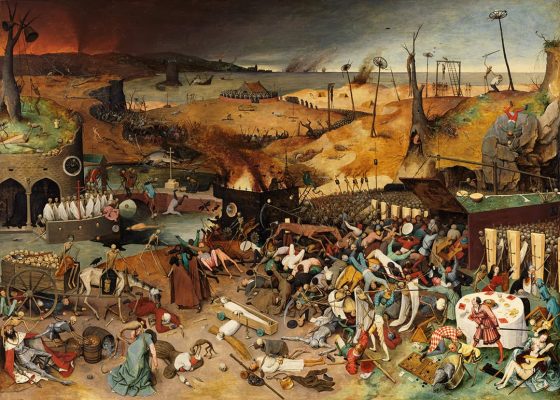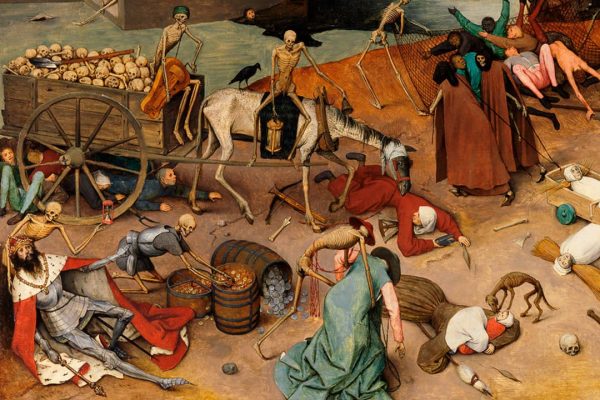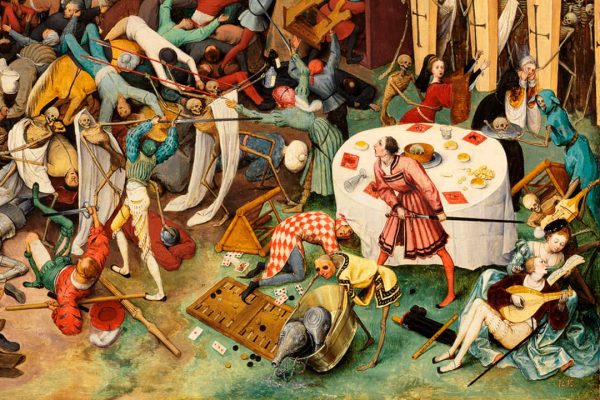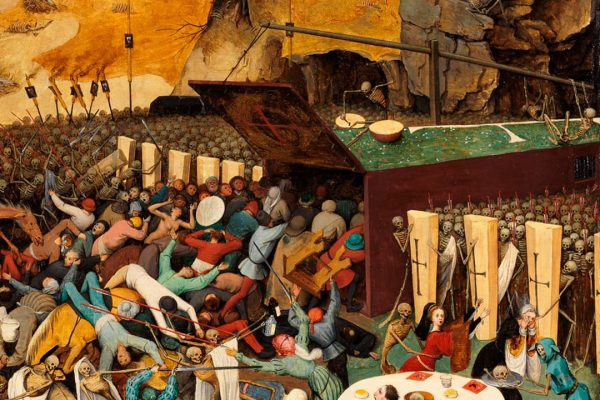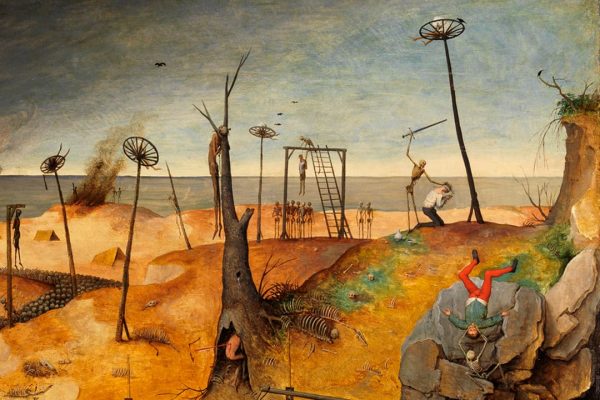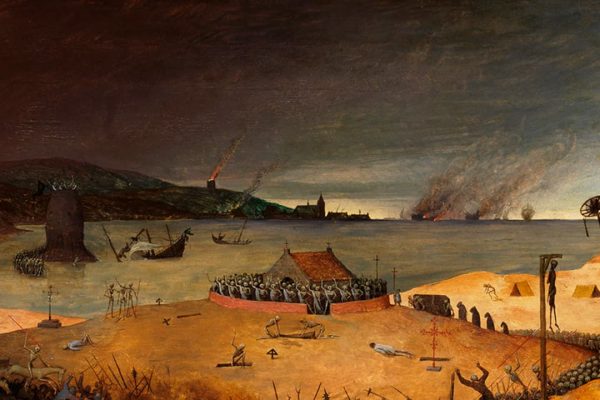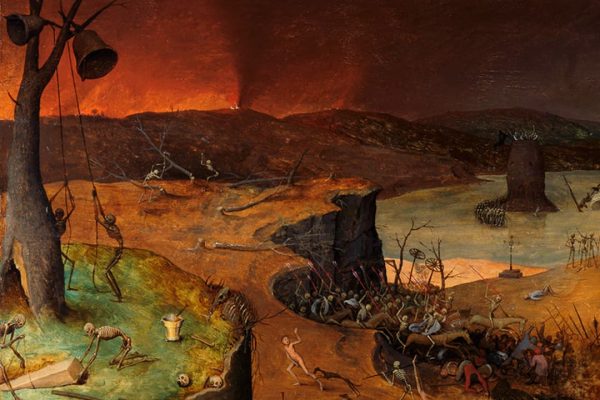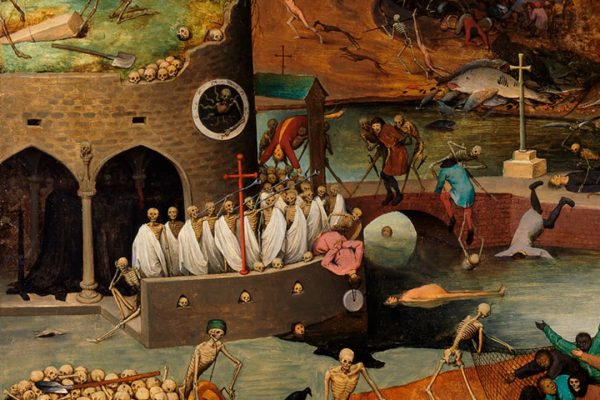Pieter Bruegel the elder · The Triumph of the Death
1560 – Oil on table – Madrid, Prado Museum
Many scholars and art critics claim to have found important similarities between the works by Hyeronimus Bosch and those by Bruegel (or Brueghel), but the truth is that the differences between both of them are abysmal. Whereas Bosch’s fantasies are born of a deep deception and preoccupation for the human being, with a clearly moralizing message; works by Bruegel (as we can see in masterpieces such as “The Dutch Proverbs” or “Children Games”) are full of irony, and even filled with a love for the rural life, which seems to anticipate the Dutch landscape paintings from the following century.
Even in a work as tragic as this, Brueghel’s irony is easily identifiable. The Death advances unstoppable, making no distinction between the rich and the poor, the just or the sinner, the man and the woman. A rich gentleman observes powerless how the skeletal hordes steal all his goods, while one of the demons shows him a sand clock in a mocking attitude. Another one of these demons offers a skull to one of the women at the banquet, while a pair of lovers, unaware of the apocalyptic scene, continue with their love songs.
Text by G. Fernández, theartwolf.com
Follow us on:

